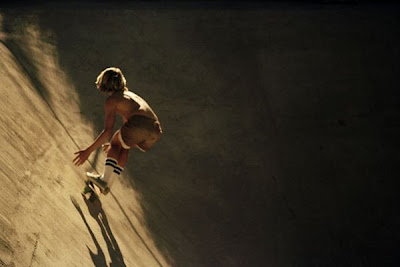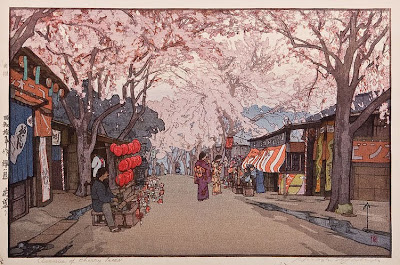+2009.jpg)
The work of conceptual artist/photographer Christopher Williams is a very strange beast indeed. He uses photography, but the photographs themselves are not the interesting thing – in fact they are almost blandness personified; it’s the idea, and what is behind the concept of the image that makes them really interesting. One glimpse at the bulk of the titles alone gives you an indication! Williams elevates a seemingly simple image to something far more loaded and complex, as he lists every single specific detail of the object in the image (to an almost absurd extent in the case of the Renault car). In fact, he doesn’t even take many of these photographs either, instead commissioning commercial photo studios – whose names feature as part of the title – to execute his ideas. He often chooses clichéd, cheesy subjects – a grinning woman wrapped in a towel, a product shot of a chocolate bar – to be photographed, but adds a level of complication which makes the resulting image slightly ‘off’. Whether its the rictus of a smile held too long, or a cutaway model of a camera – a camera that could never actually take a photograph - or leaving the colour reference card in the frame next to the subject, the result is always intriguing and disturbing.
Williams is also infamous for showing the same photographs again and again at different exhibitions over the years. He tweaks and tailors the display to suit each gallery or museum, and occasionally adds new pieces, but there is invariably much repetition.
By subverting these normal, accepted practices, which seem an intrinsic part of modern photography (particularly within an art-based context) Williams has continuously questioned the very concept of what can constitute a photograph, and how much the actual visual content of that photograph matters.
Body Type & Seating: 4-dr sedan - 4 to 5 persons. Engine Type: 14/52 Weight: 1397 lbs. Price: $1495,00 USD (original)
CHASSIS DATA: Wheelbase: 89 in. Overall length: 155 in. Height: 57 in. Width: 60 in. Front thread: 49 in. Rear thread: 48 in. Standard Tires: 5.50x15
PRODUCTION DATA: Sales: 18,432 sold in U.S. in 1964 (all types). Manufacturer: Regie Nationale des Usines Renault, Billancourt, France. Distributor: Renault Inc., New York, NY., U.S.A.
Serial number: R-10950059799
Engine Number: Type 670-05 # 191563
California License Plate number: UOU 087
Vehicle ID Number: 0059799
(For R.R.V.)
Los Angeles, California
January 15, 2000

Cutaway model Nikon Em. Shutter: Electronically governed Seiko metal blade shutter, vertical travel with speeds from 1/1000 to 1 second, with a manual speed of 1/90th. Meter: Center-weighted Silicon Photo Diode, ASA 25-1600, EV 2-18 [with ASA film and 1.8 lens]. Aperture Priority automatic exposure. Lens Mount: Nikon F mount, Al coupling [and later] only. Flash: Synchronization at 1/90 via hot shoe. Flash automation with Nikon SB-E or SB-10 flash units. Focusing: K type focusing screen, not user interchangeable, with 3mm diagonal split image rangefinder. Batteries: Two PX-76 or equivalent. Dimensions: 5.3" x 3.38" x 2.13" [135mm x 86mm x 54mm], 16.2 oz [460g]. Fotostudio Axel Gnad, Düsseldorf October 17, 2008 [b&w]
Kodak Three Point Reflection Guide, © 1968 Eastman Kodak Company, 1968. (Miko smiling), Vancouver, B.C., April 6, 2005
2005 Kodak Three Point Reflection Guide, © 1968 Eastman Kodak Company, 1968. (Miko laughing), Vancouver, B.C., April 6, 2005
2005 Kodak Three Point Reflection Guide, © 1968 Eastman Kodak Company, 1968. (Corn) Douglas M. Parker Studio, Glendale, California, April 17, 2003
2003
Tokuyo Yamada
Hair designer
Shinbiyo Shuppan Co., Ltd.
Minami-Aoyama, Tokyo
April 14, 1993
(Nr. 1), 1993
FUJI Color
2000
Printed on: Fujicolor Professional Crystal Archive RA-4 Color Paper Type C C-print
Negative film: FUJI NPL 160T Process C-41 Glossy Process RA-4 March 10, 2000
[title TBA]
2005
College student
Shinbiyo Shuppan Co., Ltd.
Minami-Aoyama, Tokyo
April 14, 1993 (#2)
Ritter Sport Von oben nach unten / from top to the bottom 100 g Tafeln / 100 g Bars Offizieller Produktname / Official Product Name / EAN Code Bar / UPC Code for Case / Bars per Case Voll Nuss / Whole Hazelnuts / 4000417019004 / 050255013005 / 10 Joghurt / Yogurt / 40004170270 09 / 050255027000 / 12 Voll Endnuss / 4000417262202 / ... / 10 Weisse Voll Nuss / White Whole Hazelnuts / 4000417013002 / 050255013003 / 10 Marzipan / Marzipan / 400041725005 / 050255025006 / 12 Cappuccino / Cappuccino / 40004172300 03 / 0550255230042 / 12 Fotostudio Axel Gnad, Düsseldorf, October 24th, 2008 [No. 1]
2009

Linhof Technika V fabricated in Munich, Germany. Salon Studio Stand fabricated in Florence, Italy. Dual cable release. Prontor shutter. Symar-s lens 150mmm/f 5.6 Schneider kreuznach. Sinar fresnel lens placed with black tape on the ground glass. Dirk Sharper Studio, Berlin, June 20, 2007
2008
Asbolus verrucosus
Death Feigning Beetle
Silverlake, California
October 1, 1996 (#1)
Atsue Sasaki Graphic designer Shinbiyo Shuppan Co., Ltd. Minami-Aoyama, Tokyo April 14, 1993 (Nr. 1, 2, 3, 4)
1994
One of 406 Ceiling Panels (23 3/4 x 23 3/4 inches each) Covered on the back with striped paper (green and white) Each Stripe is 8.7 cm. From “Frost and Defrost: A Work In Situ By Daniel Buren” Otis Art Institute Gallery, 2401 Wilshire Boulevard, Los Angeles, California January 28 – March 4, 1979 Hal Glicksman, Gallery Director; Christopher D’arcangelo, Assistant to Daniel Buren Douglas M. Parker Studio, Los Angeles, California May 4, 2006
2006

Polaroid 660 [promotional non functional] with completely transparent plastic housing. Produced for promotional use for display and demonstration purposes. Lens: 116mm f/11, single-element plastic Automatic focus; uses Polaroid Sonar AF system. Minimum focus: 3ft. Electronic shutter: range 1/4-1/200 sec. programmed automatic exposure system; built-in electronic flash, with automatic flash, exposure for all pictures. Camera was introduced 1981 with an original product price of $95.00 and worked with the Polaroid 600 Film family which all have the following characteristics in common: ASA 600 film speed, self-developing, packaged 10 prints to a pack including a self-contained battery to power camera. Actual image area: 3 1/8" x 3 1/8" [7.9 x 7.9] Fotostudio Axel Gnad, Düsseldorf February 09, 2009
Mustafa Kinte (Gambia) Shirt: Van Laak Shirt Kent 64 41061 Mönchengladbach, Germany Dirk Sharper Studio, Berlin, July 20th, 2007
2008
All images © Christopher Williams
+2009.jpg)


















































+1925.jpg)
























